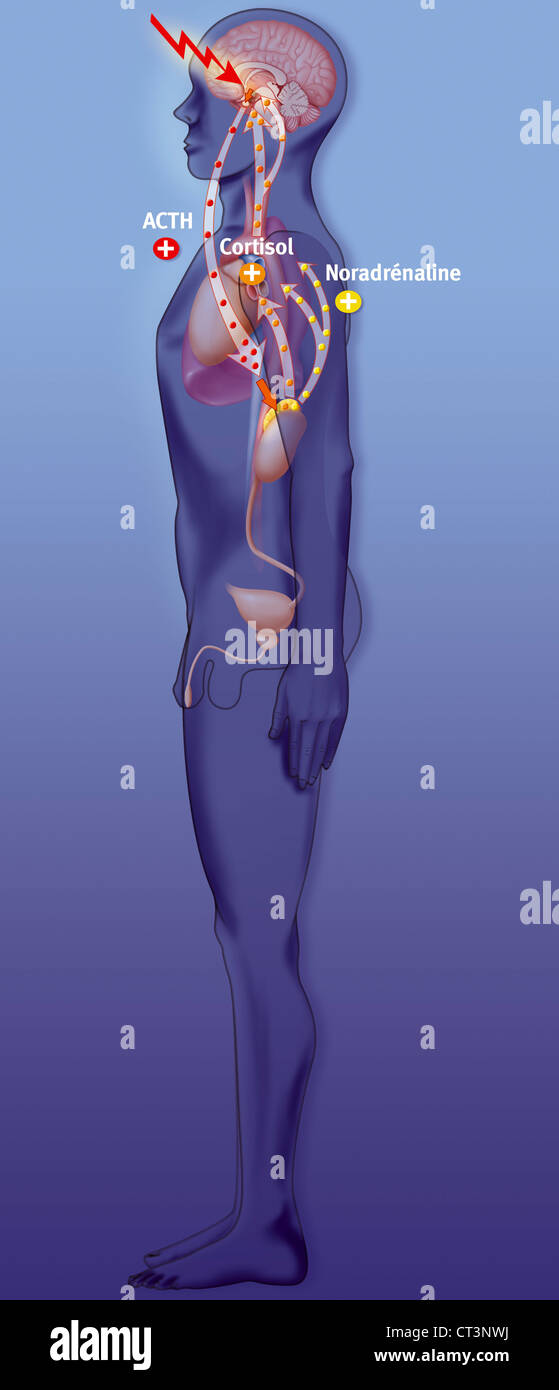STRESS, ARTWORK

Image details
Contributor:
BSIP SA / Alamy Stock PhotoImage ID:
CT3NWJFile size:
53.4 MB (832.6 KB Compressed download)Releases:
Model - no | Property - noDo I need a release?Dimensions:
2835 x 6588 px | 24 x 55.8 cm | 9.5 x 22 inches | 300dpiDate taken:
10 April 2007Photographer:
JACOPIN / BSIPMore information:
The effects of stress on the organism. Representation of the effects of stress on the organism, in phase of resistance that is considered as beneficial before the critical stage. Stress, physical or psychological, leads to an activation of the hypothalamus. This one, by the intermediary of the hormones, stimulates the adenohypophysis to produce ACTH (AdrenocorticoTropin Hormone or corticotrope hormone, in red). The ACTH will in turn stimulates the suprarenal glands, and more particulary the corticosurrenals, to secrete glucocorticoids (cortisol, also named hydrocortisone, and cortisone, in orange). These glucocorticoids notably lead to a fast elevation of the glucose, lipids and proteines rate in the blood (energy release), enabling the organism to react. They also have an effect on the heart, the brain and an antalgic role (against pain). The release of the glucocorticoids also acts through a negative retrocontrol loop on the hypothalamus, in order to inhibit the production of ACTH and thereby their own blood rate. Parallelly, the hypothalamus activates the secretion of catecholamines (adrenaline and noradrenaline, in yellow) by the synapses of the sympathetic nervous system and the medullosurrenal glands. These hormones increase cardiac and respiratory capacities and allow the mobilisation of alertness centres and decision-making of the brain.